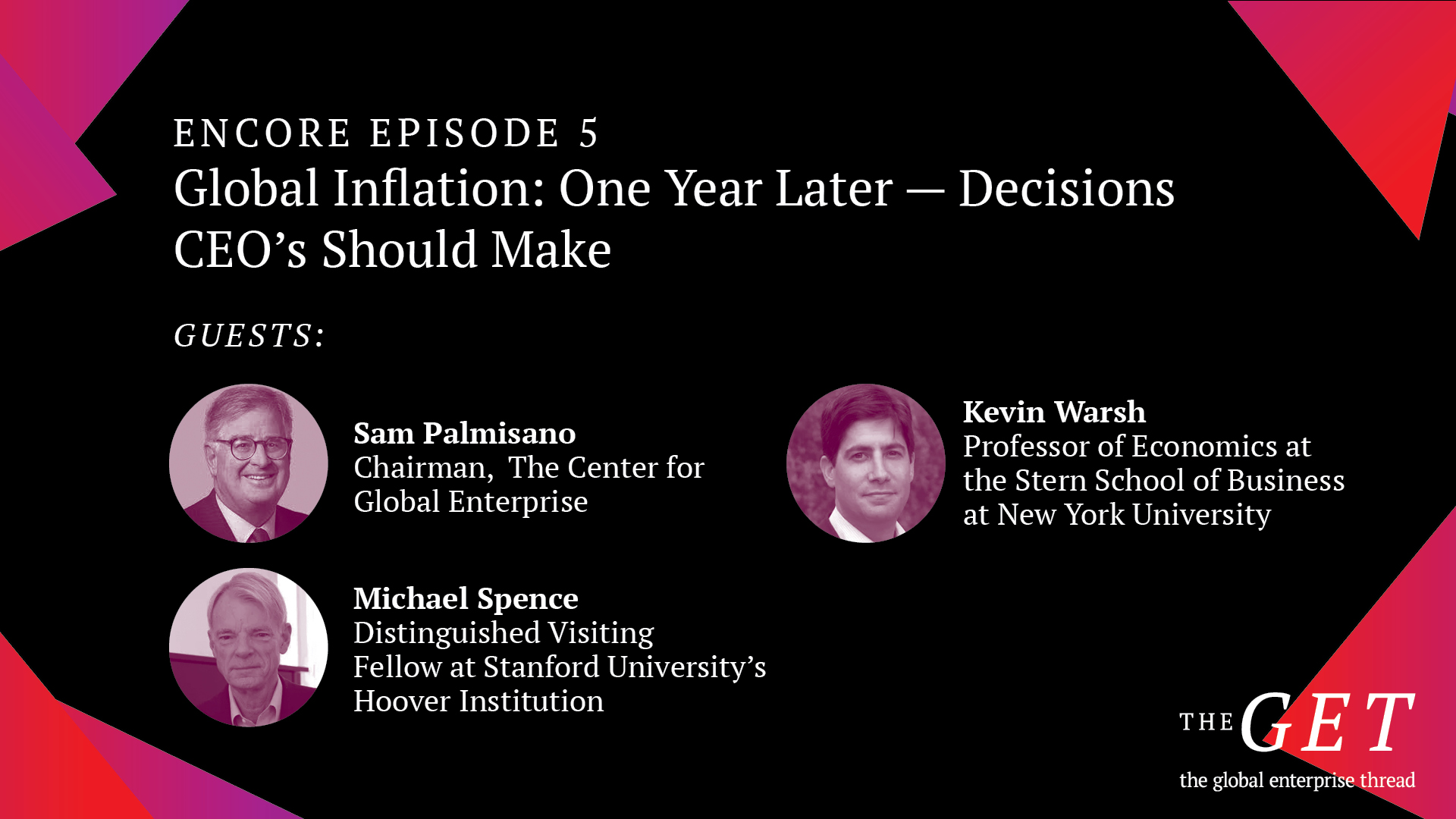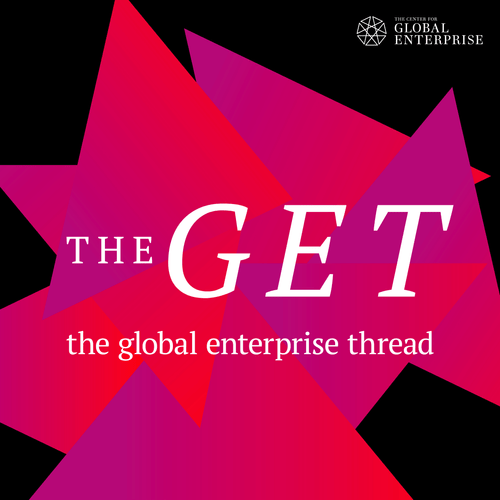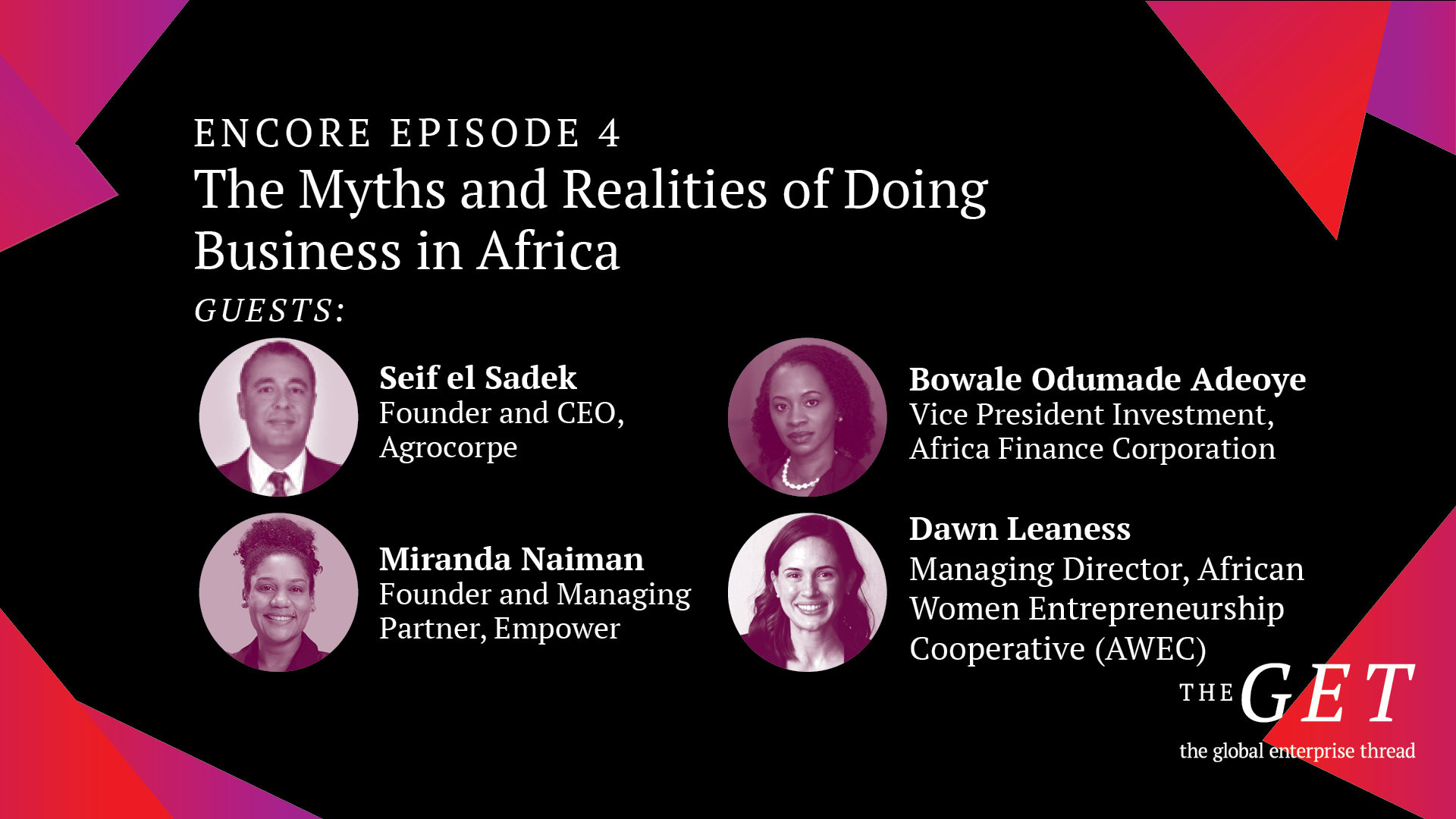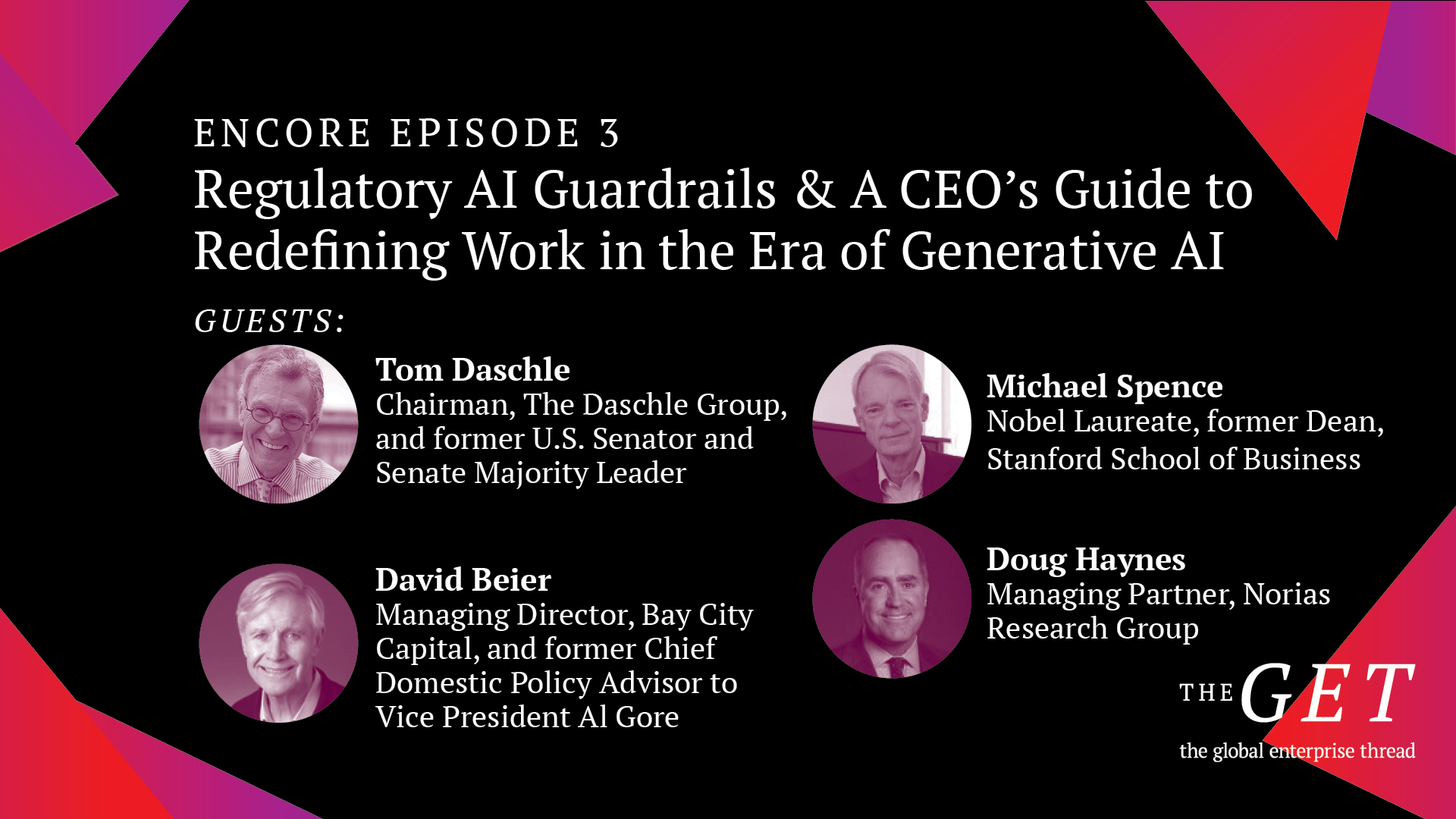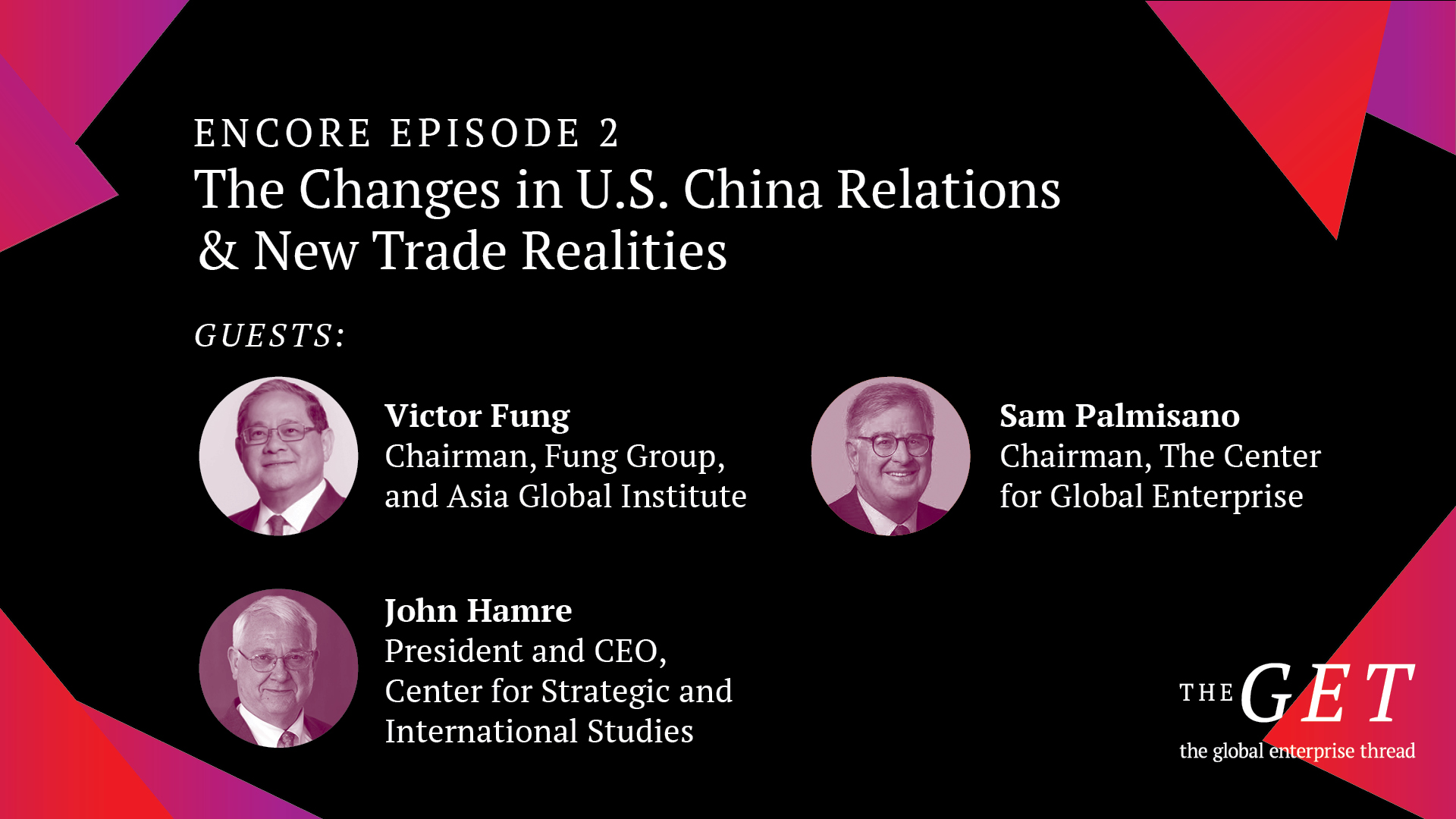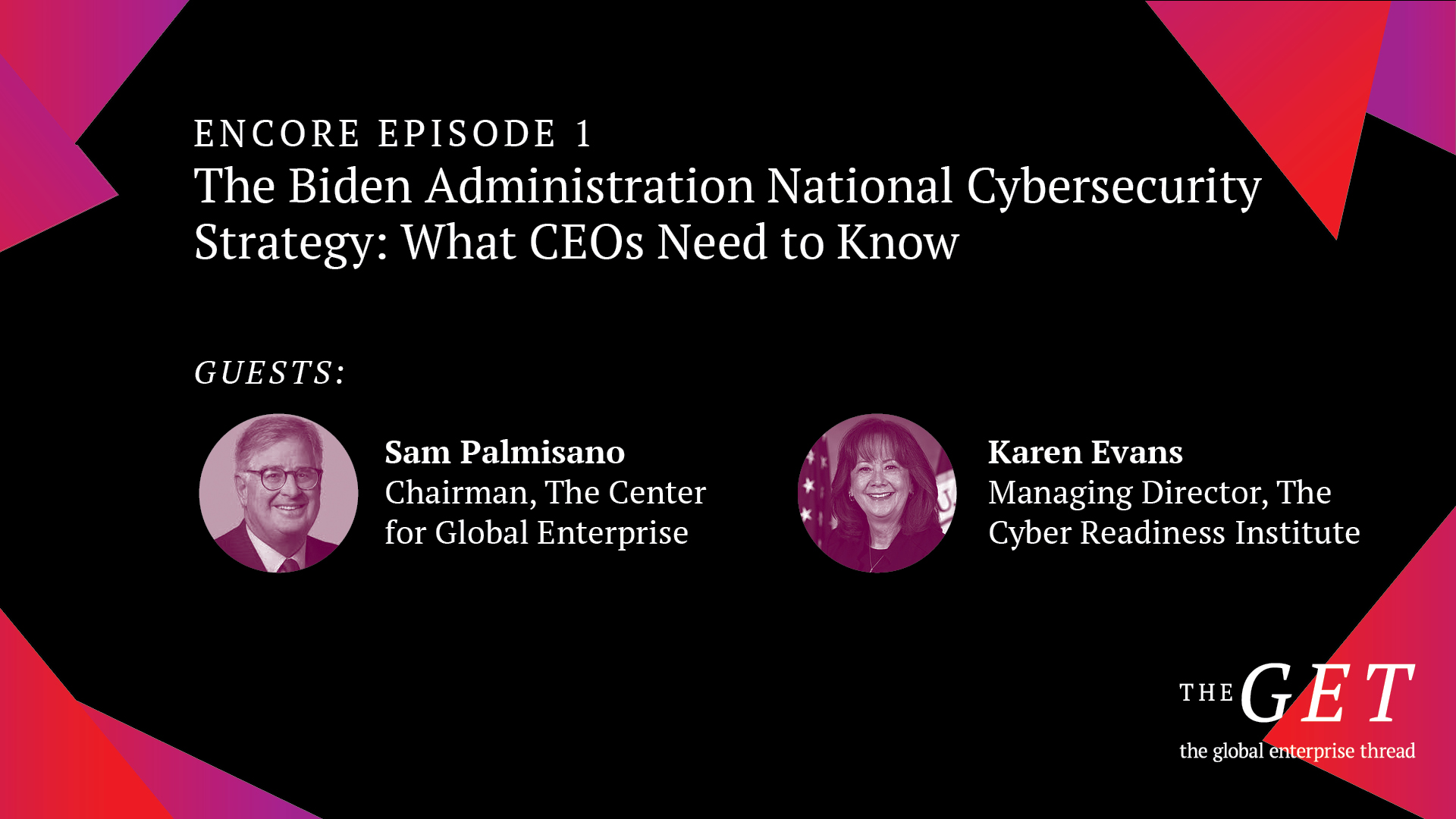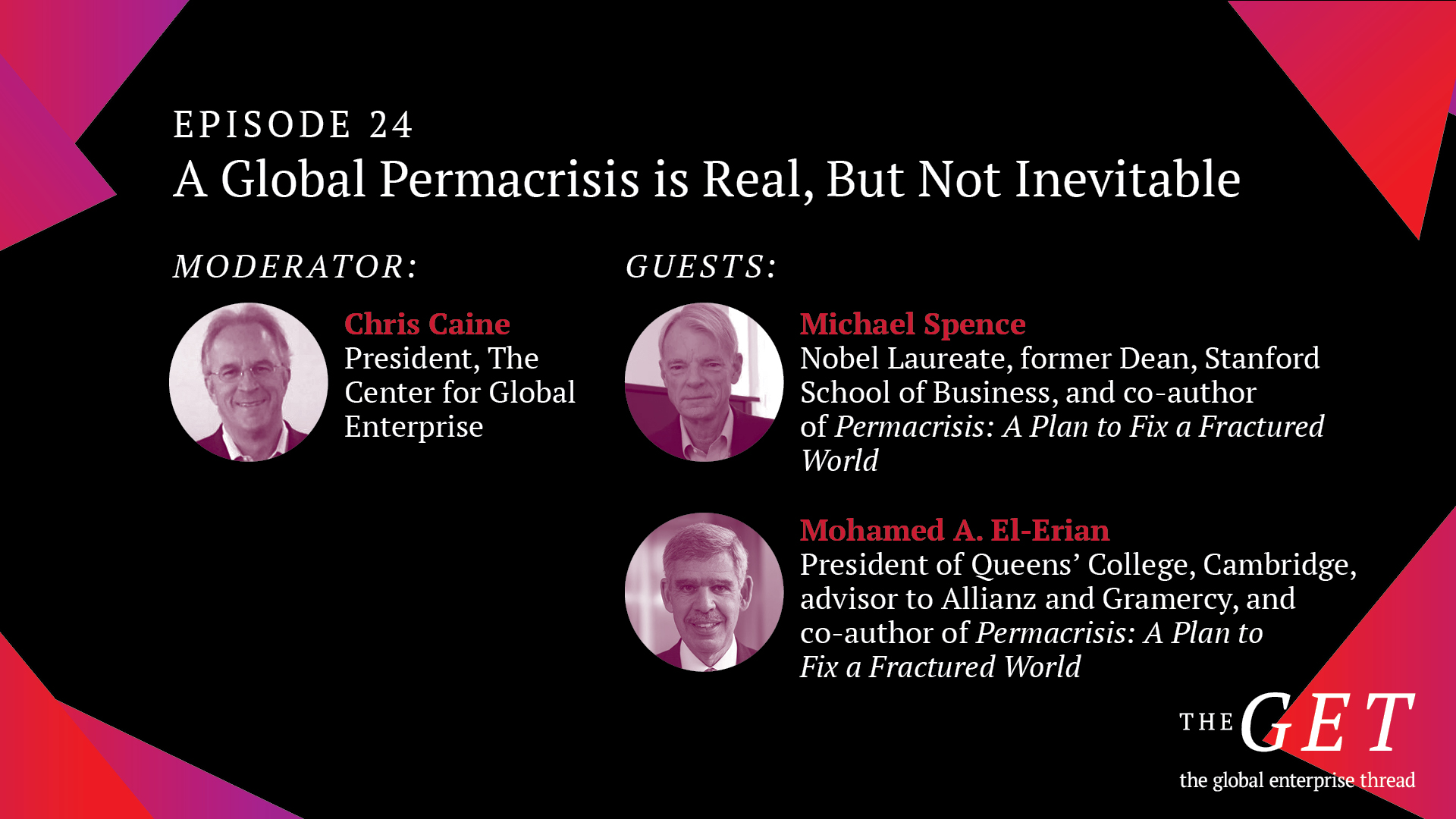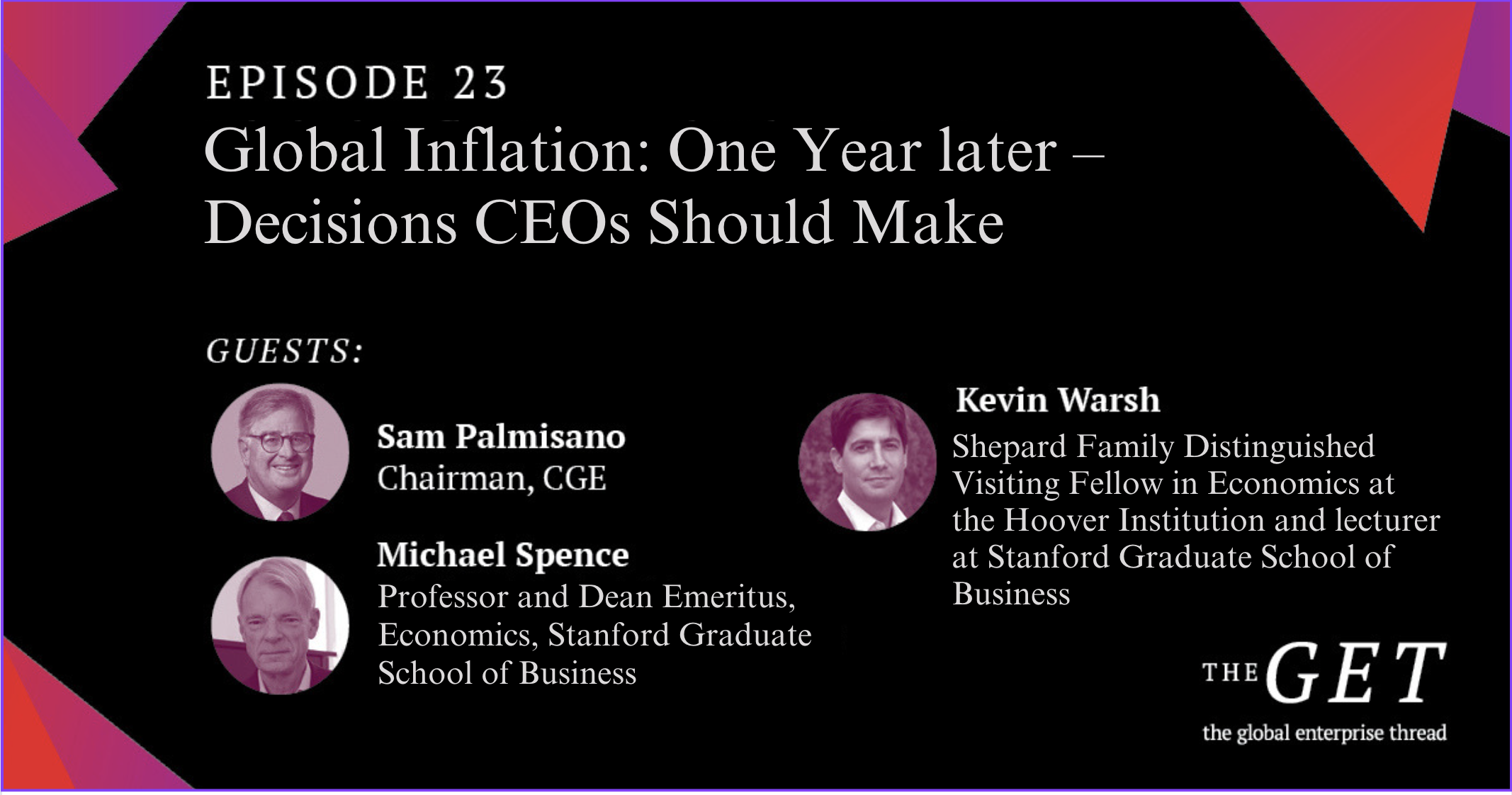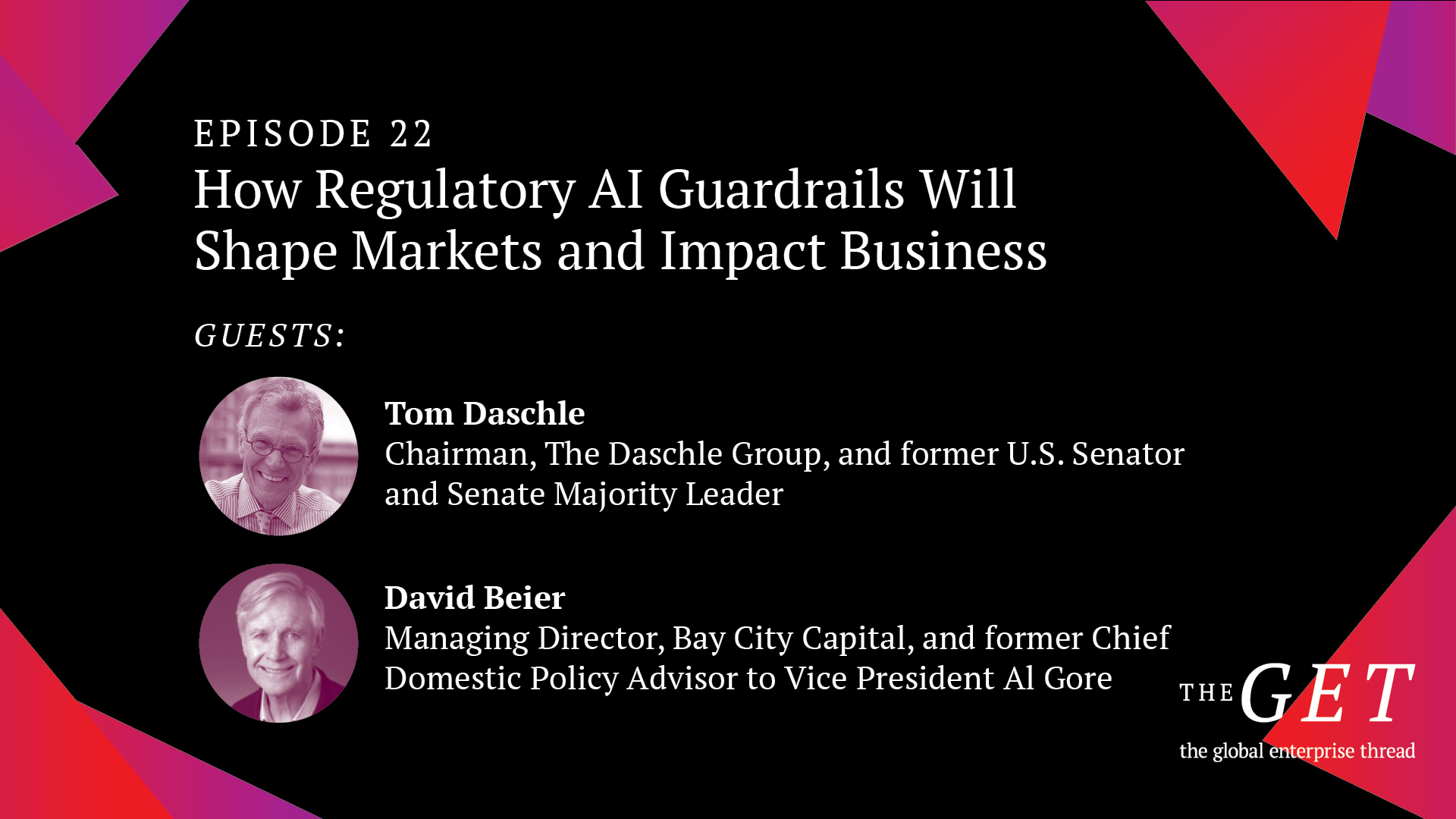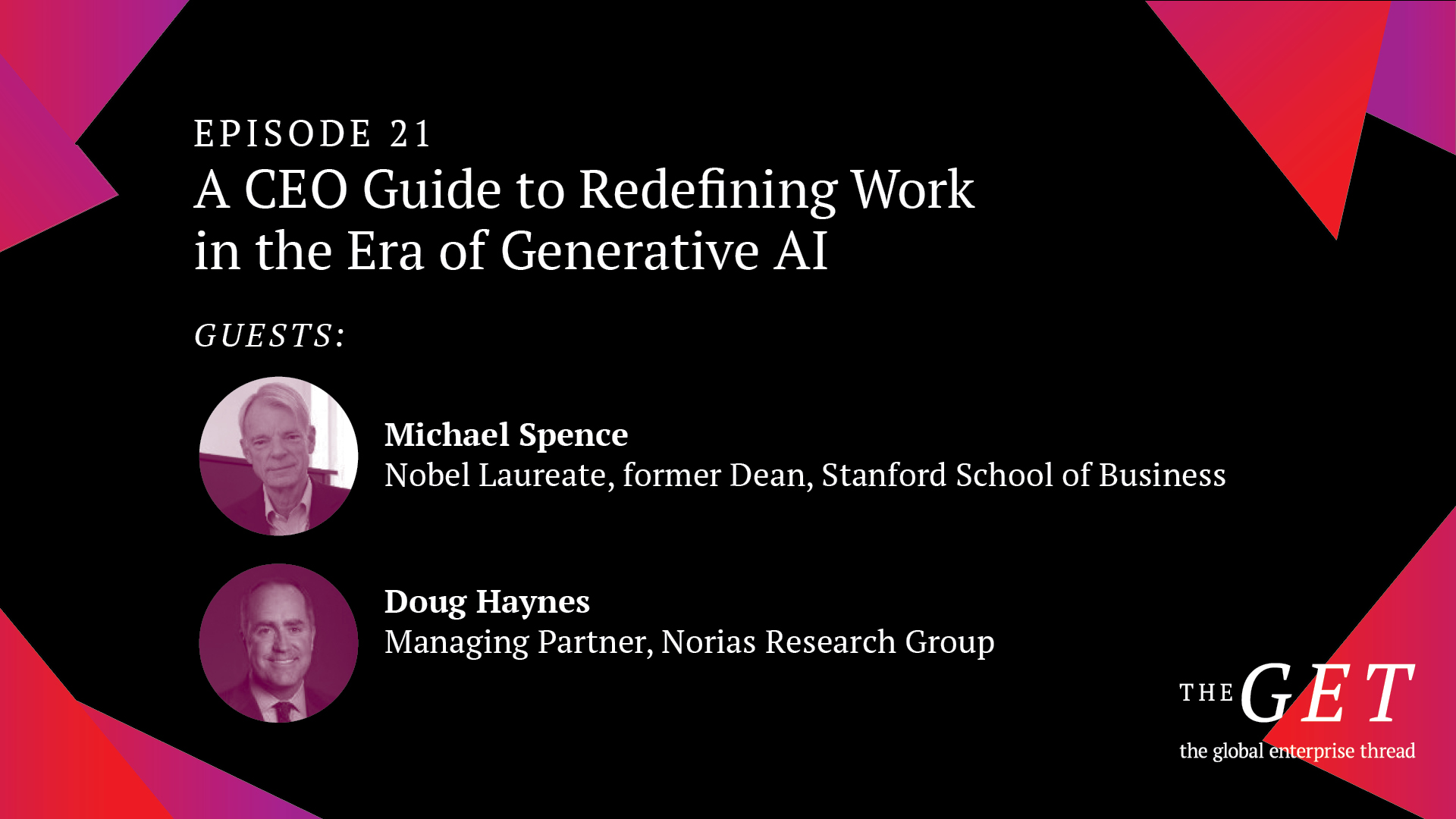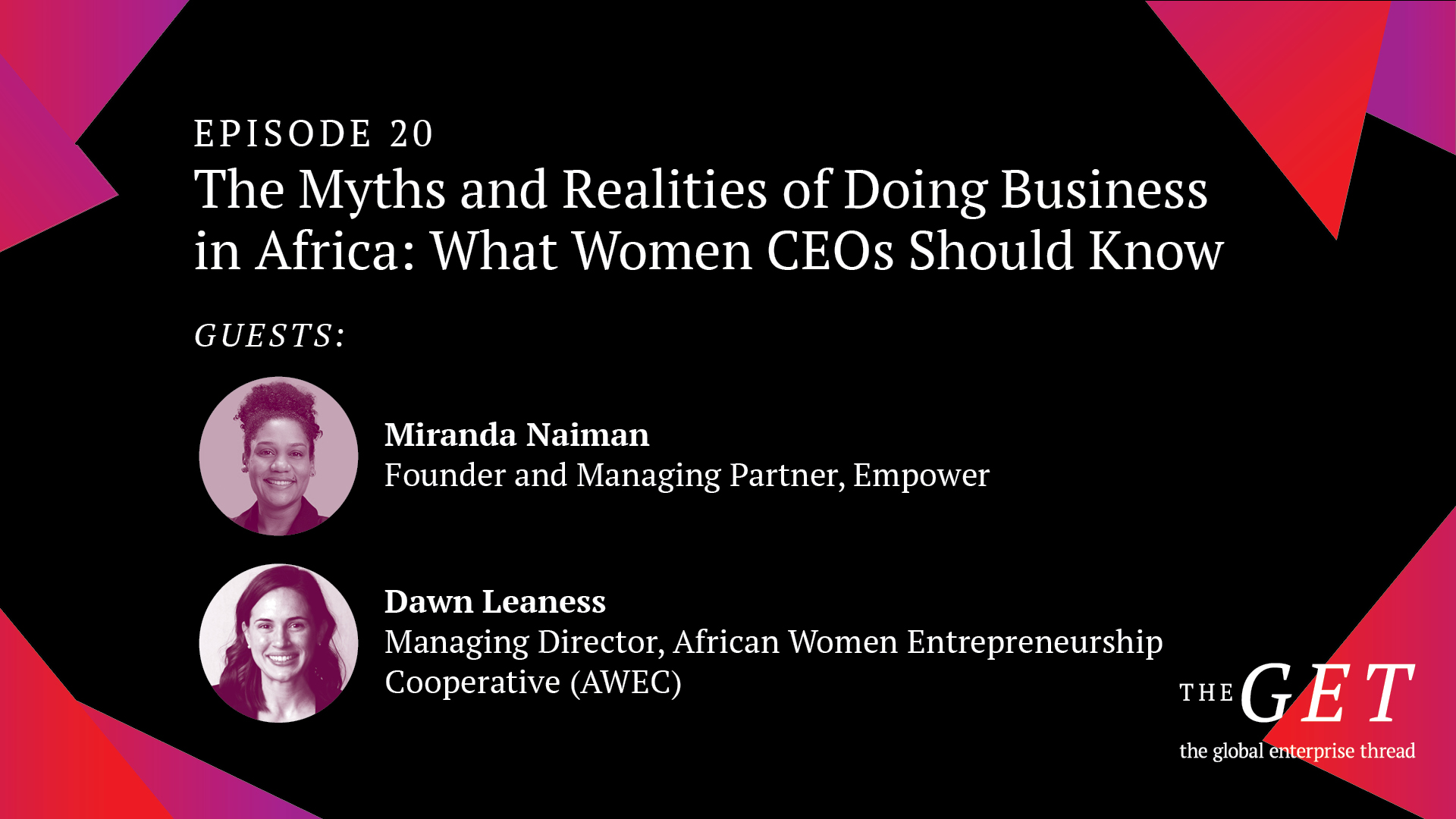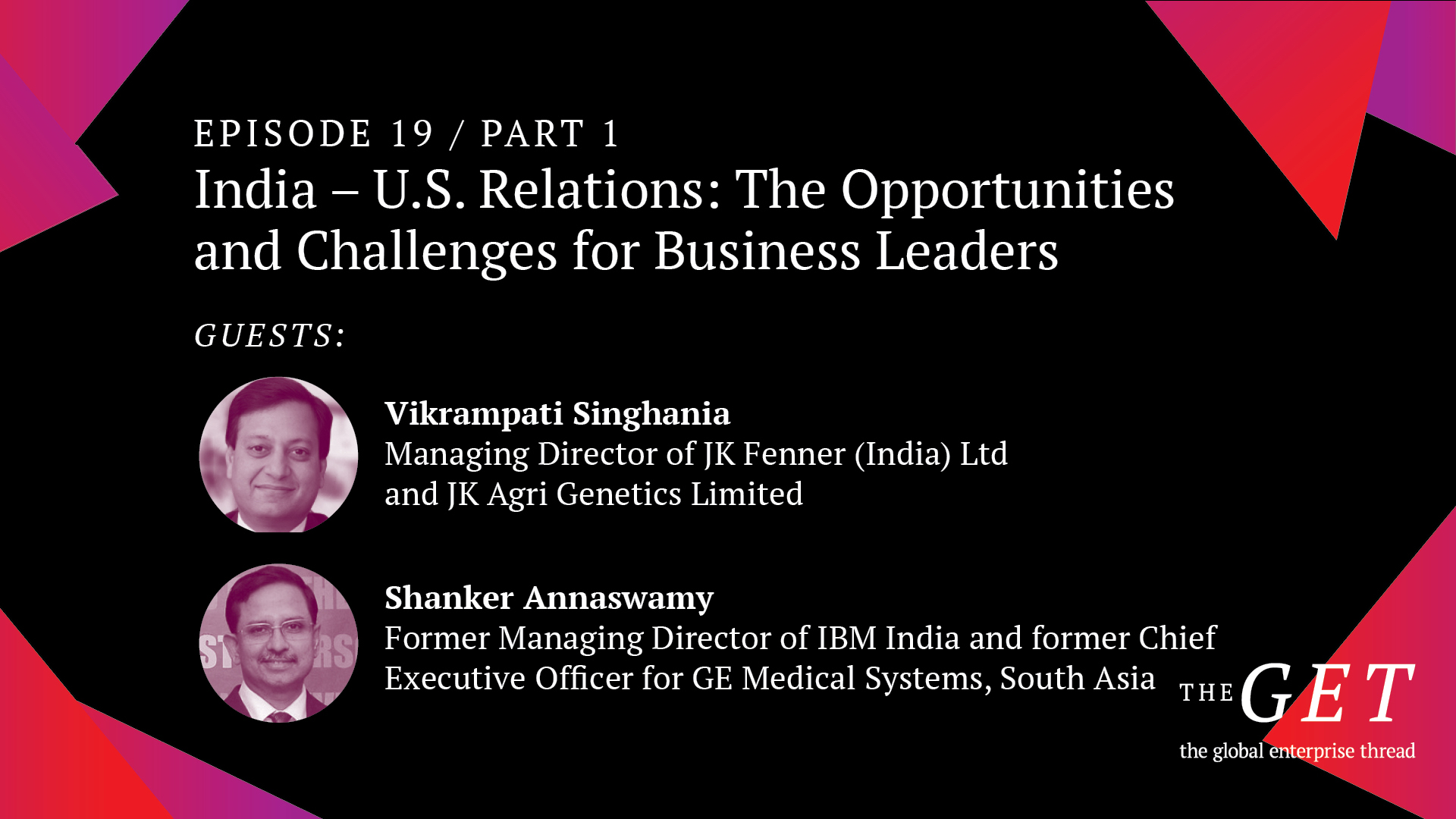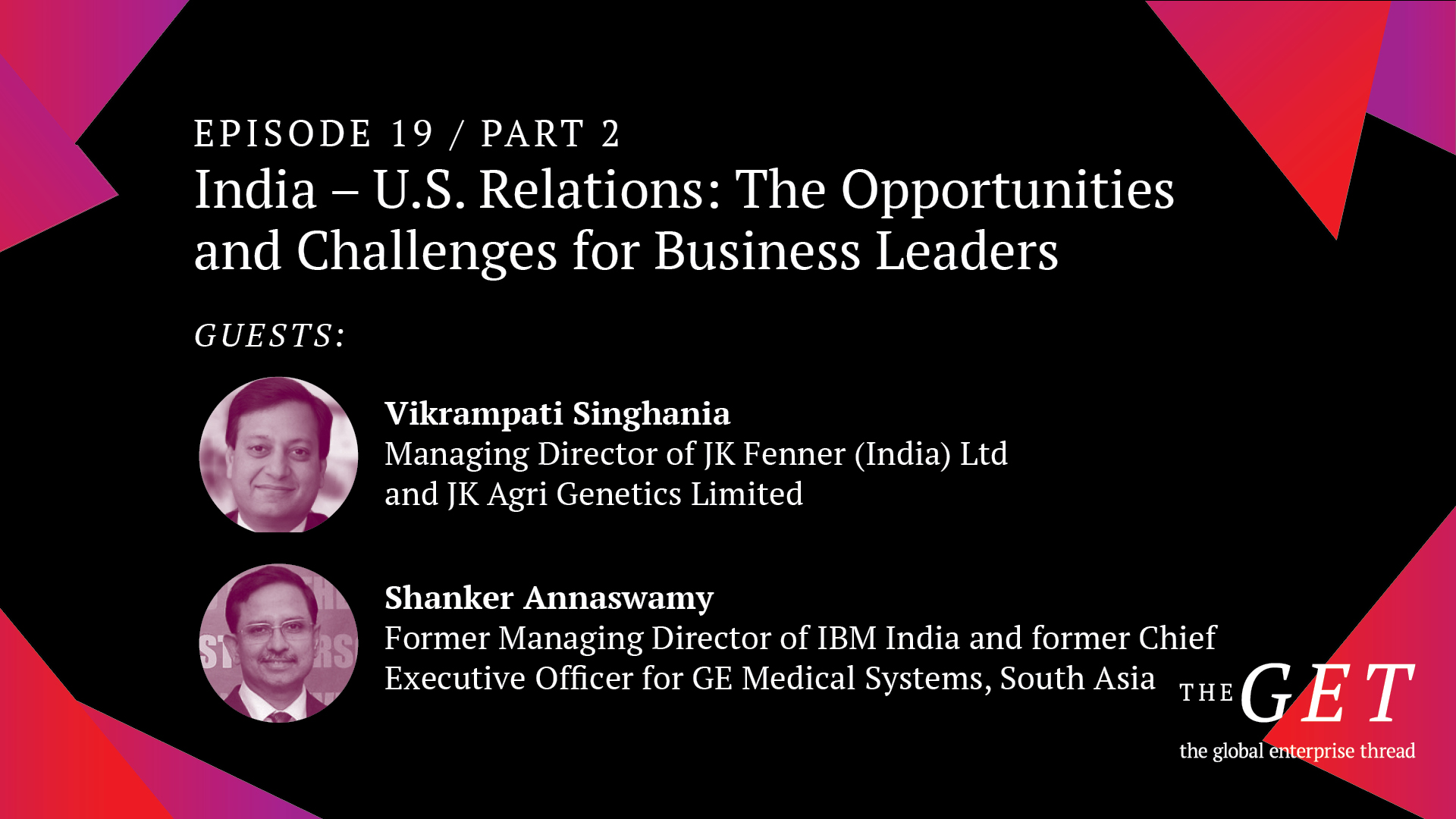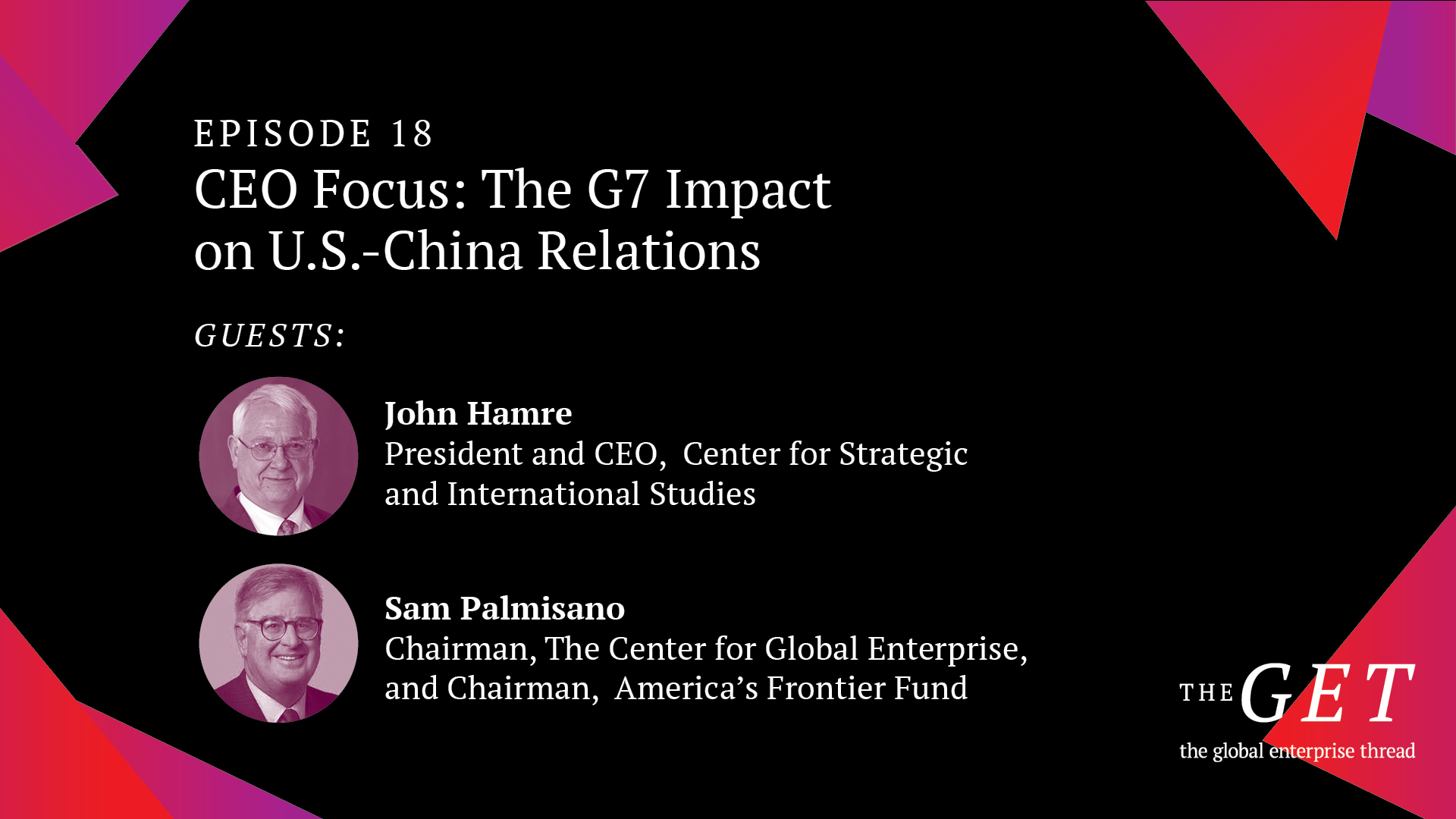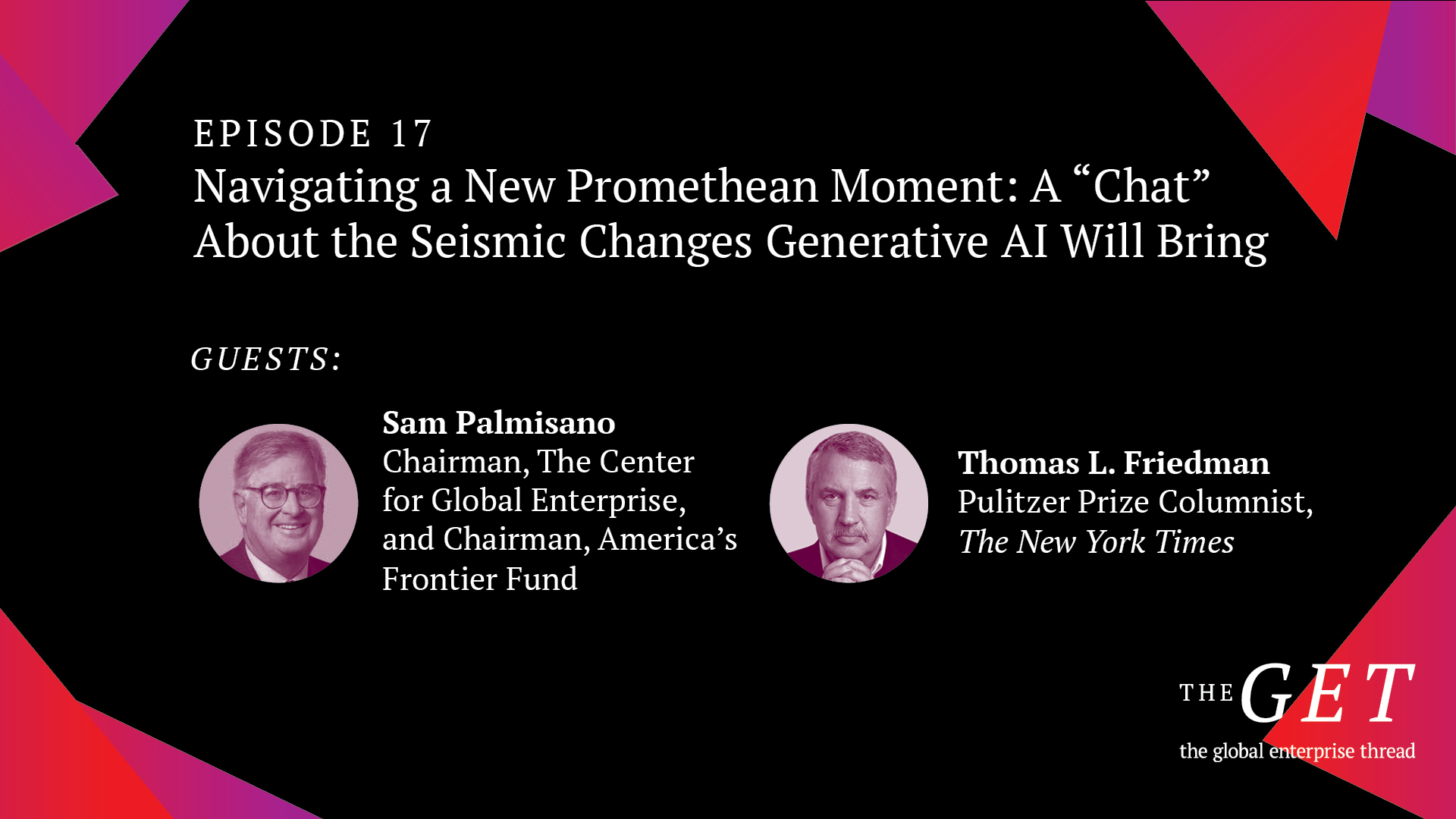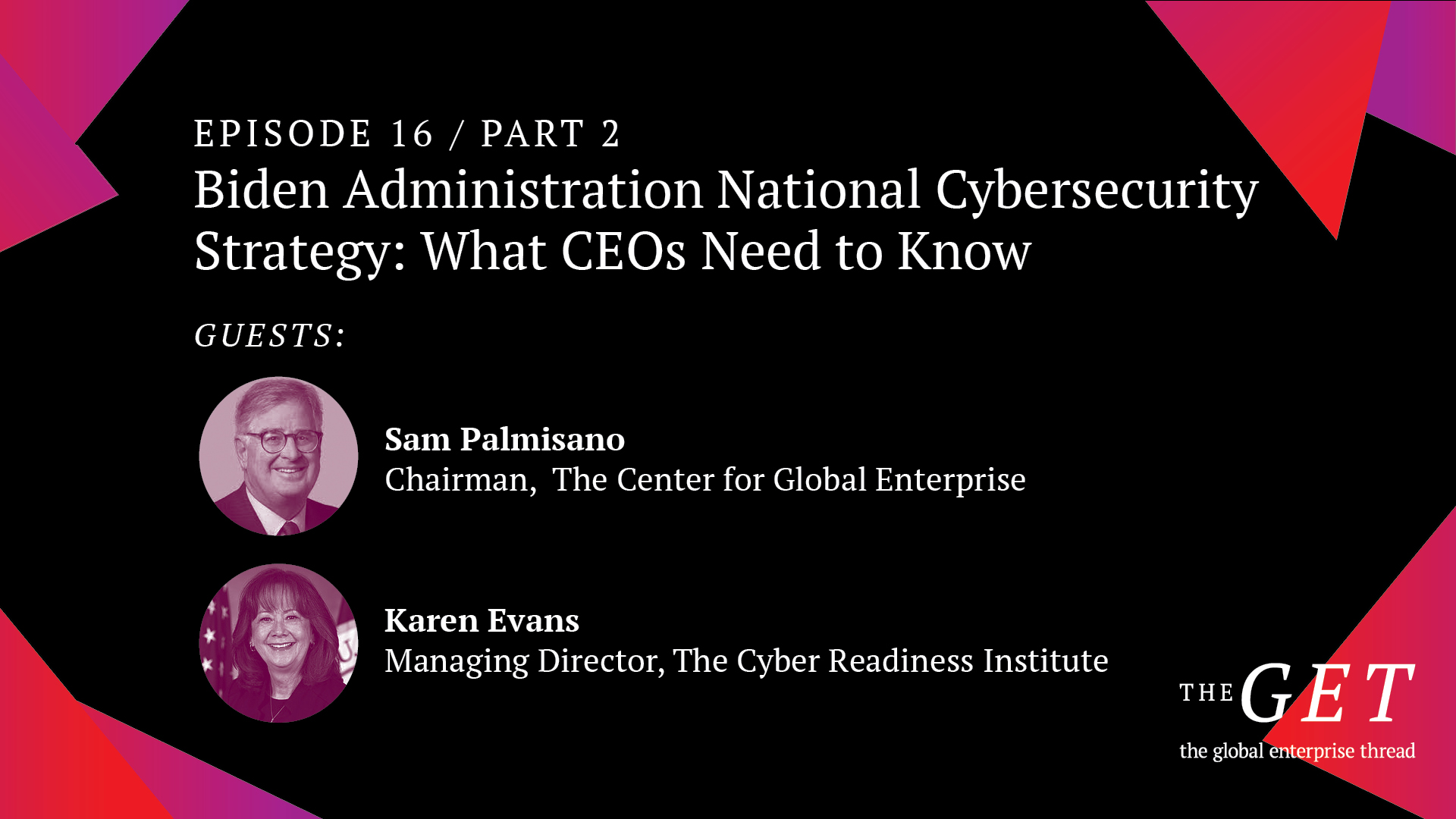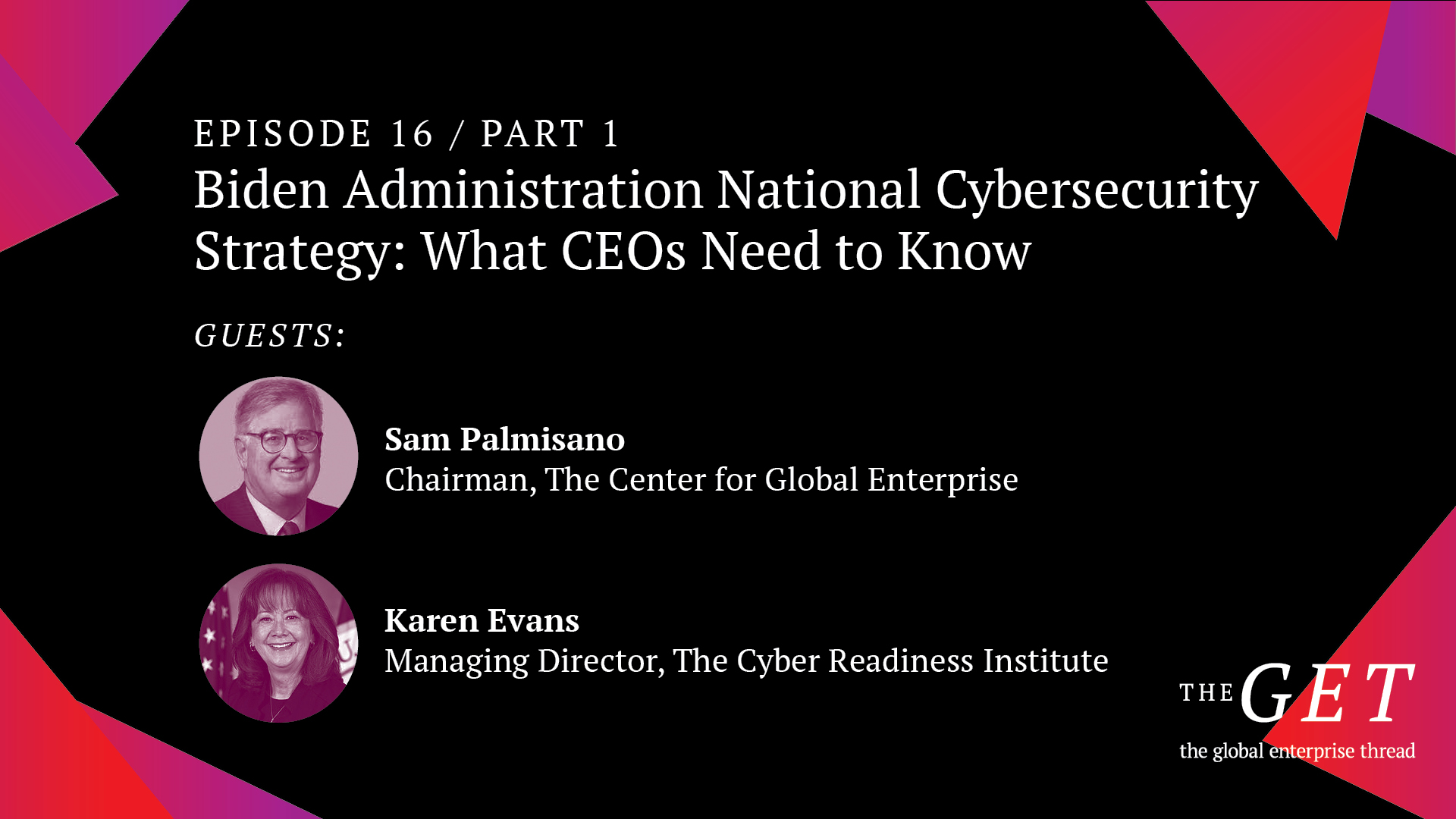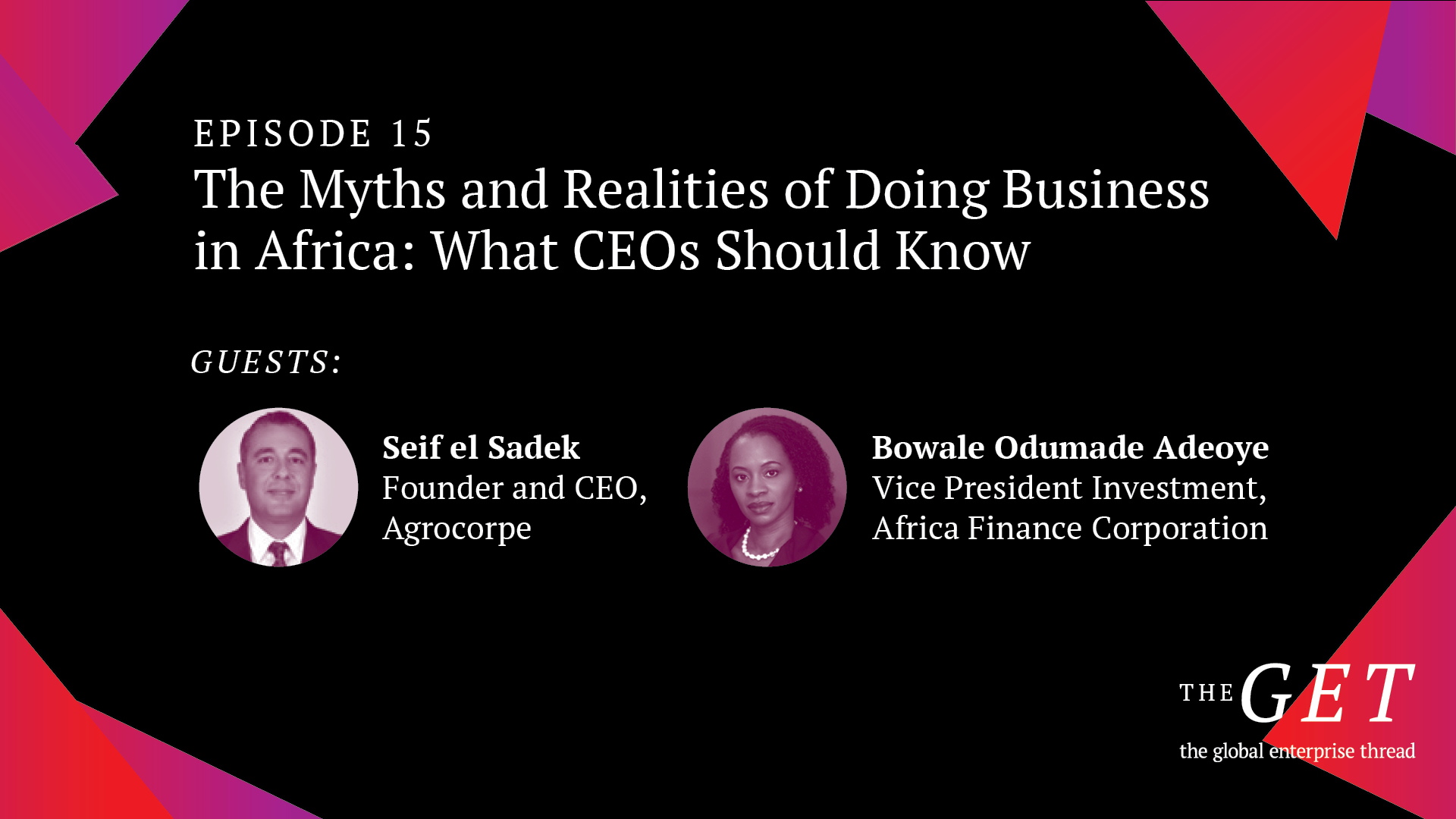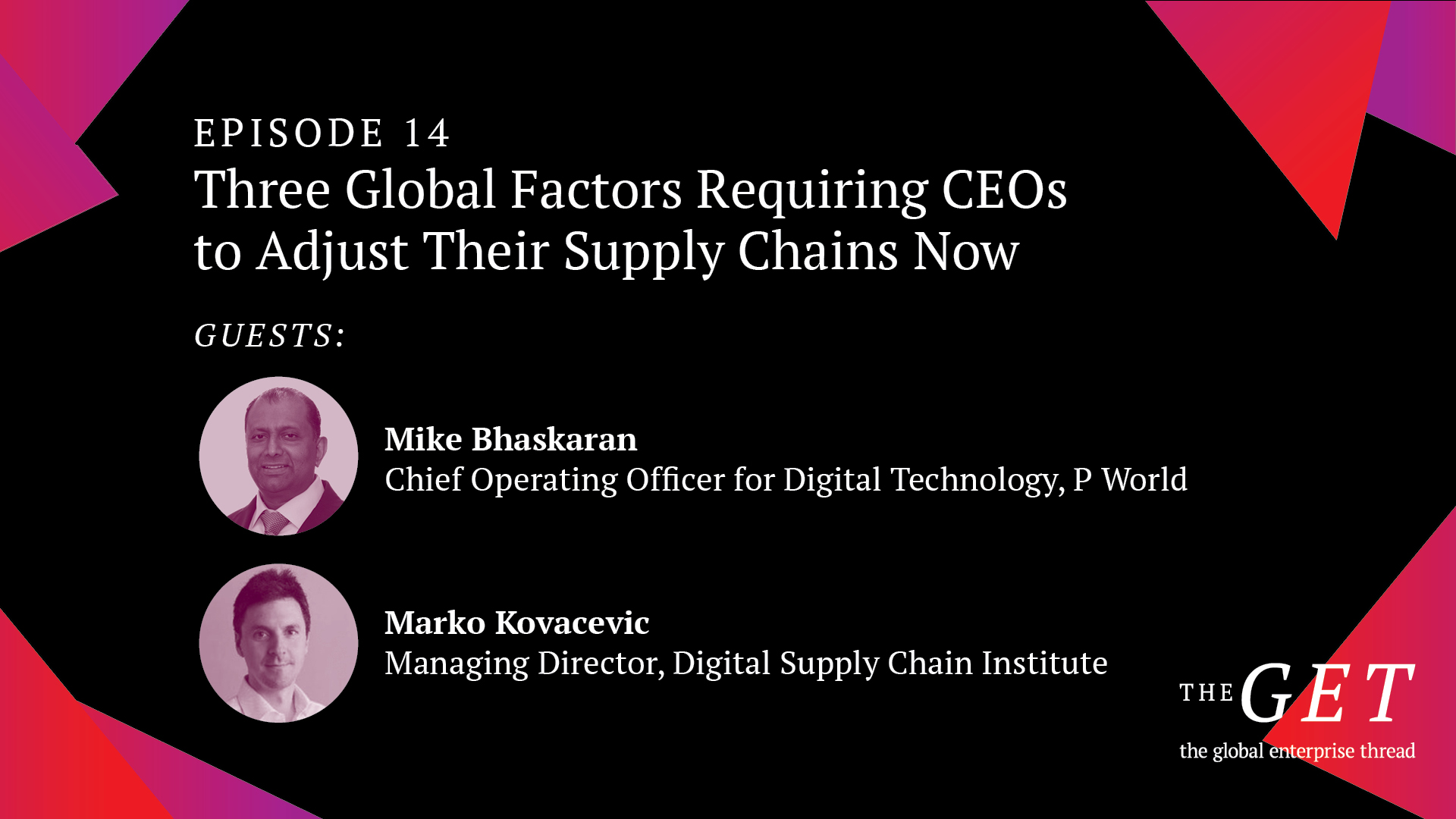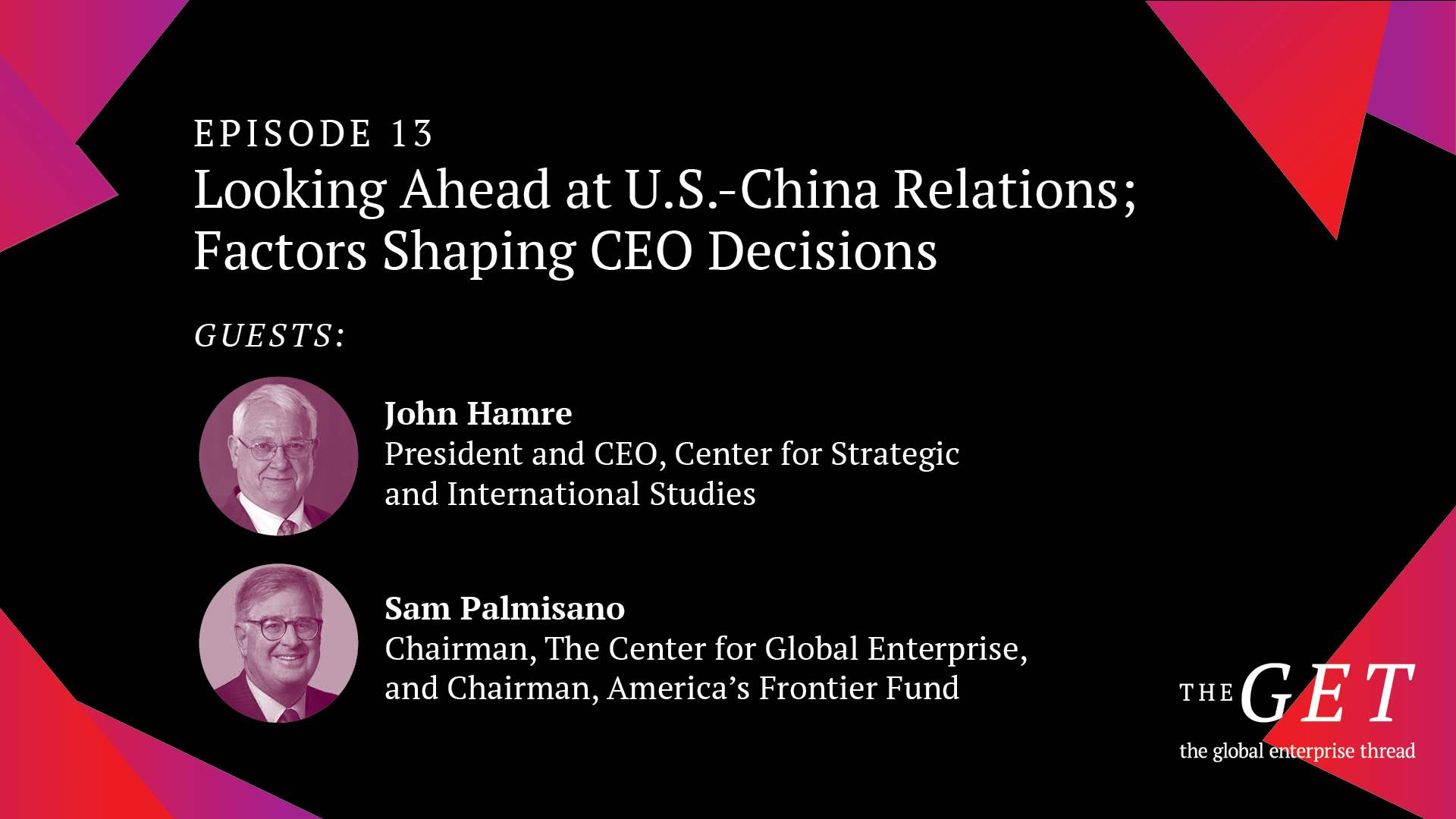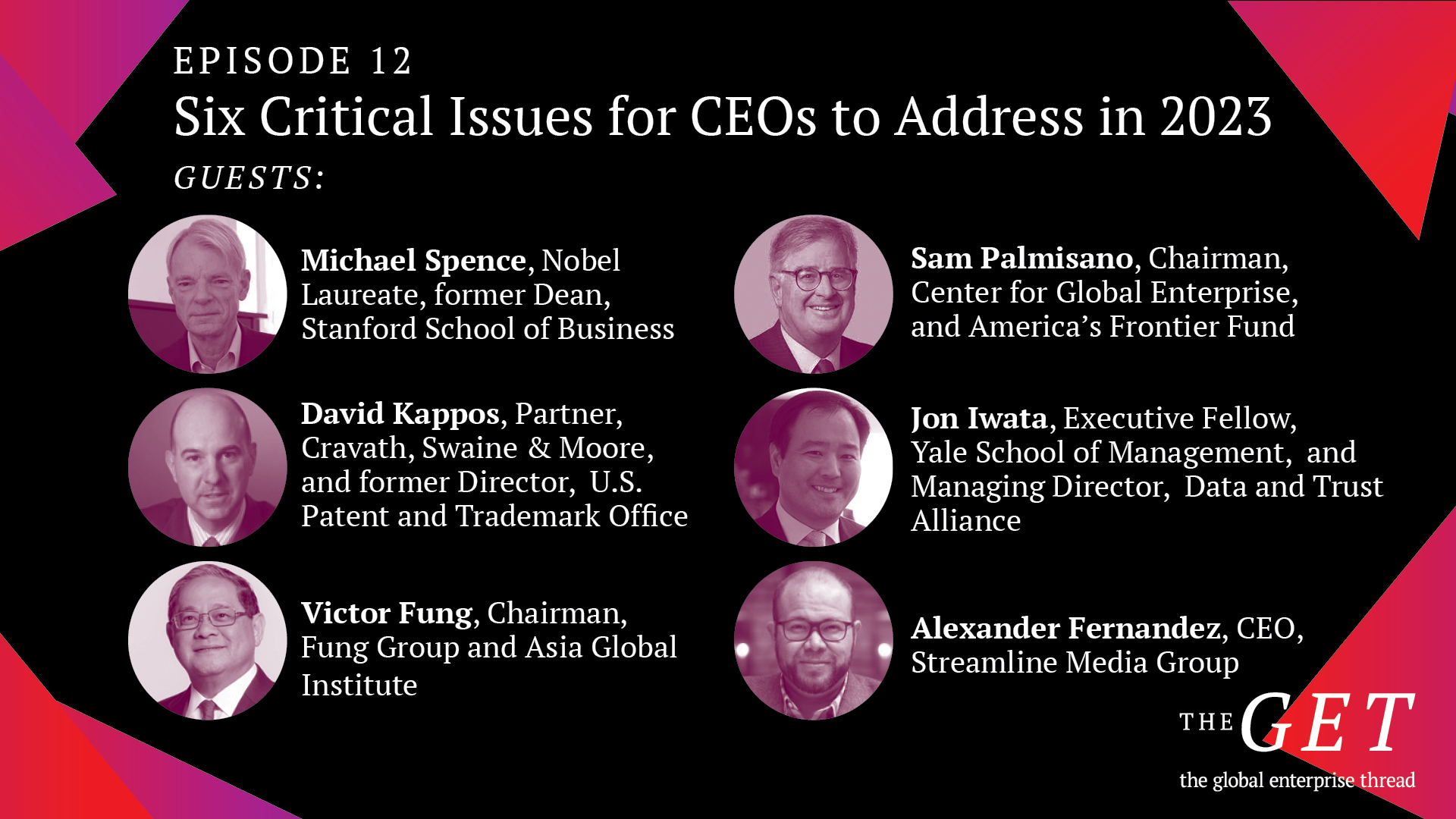FEATURED EPISODE: Global Inflation One Year Later– Decisions CEOs Should Make
Download Episode
About The GET
The GET pulls business and management insights from today’s economic and societal developments to help global enterprise leaders move to the future with greater agility and performance. Offering timely conversation and analysis with renowned business leaders, The GET addresses the most pressing topics confronting global businesses and management.
The host of The GET is Christopher G. Caine, President of the Center for Global Enterprise (CGE). Available on Apple Podcasts, Spotify, or wherever you get your podcasts. Subscribe to The GET and look for new episodes on the second Tuesday of every month.
Latest Episodes
Encore Episode:
Part 1. The Myths and Realities of Doing Business in Africa: What CEOs Should Know.
Part 2. The Myths and Realities of Doing Business in Africa: What Women CEOs Should Know
Download Episode
Encore Episode:
Part 1. How Regulatory AI Guardrails Will Shape Markets and Impact Business.
Part 2. A CEO Guide to Redefining Work in the Era of Generative AI
Download Episode
Encore Episode:
Part 1. The Changes in U.S.-China Relations Shaping CEO Decisions.
Part 2. New Trade Realities: How CEOs Can Embrace Open Trade Regionalism (Oct. 10, 2022)
Download Episode
Encore Episode: The Biden Administration National Cybersecurity Strategy: What CEOs Need to Know [Parts 1&2]
Download Episode
Episode 24: A Global Permacrisis is Real, But Not Inevitable
Download Episode
Episode 23: Global Inflation: One Year later – Decisions CEOs Should Make
Download Episode
Episode 22: How Regulatory AI Guardrails Will Shape Markets and Impact Business
Download Episode
Episode 21: A CEO Guide to Redefining Work in the Era of Generative AI
Download Episode
Episode 20: The Myths & Realities of Doing Business in Africa: What Women CEOs Should Know
Download Episode
Episode 19: India – U.S. Relations: The Opportunities and Challenges for Business Leaders – Part 1
Download Episode
Episode 19 : India – U.S. Relations: The Opportunities and Challenges for Business Leaders – Part 2
Download Episode
Episode 18: The G7 Impact on U.S.-China Relations
Download Episode
Episode 17: A Generative AI Primer for CEOs
Download Episode
Episode 16: Biden Administration National Cybersecurity Strategy: What CEOs Need to Know – Part 2
Download Episode
Episode 16: Biden Administration National Cybersecurity Strategy: What CEOs Need to Know – Part 1
Download Episode
Episode 15: The Myths and Realities of Doing Business in Africa: What CEOs Should Know
Download Episode
Episode 14: Three Global Factors Requiring CEOs to Adjust Their Supply Chains Now
Download Episode
Episode 13: Looking Ahead at U.S.-China Relations; Factors Shaping CEO Decisions
Download Episode
Episode 12: Six Critical Issues for CEOs to Address in 2023
Download Episode
